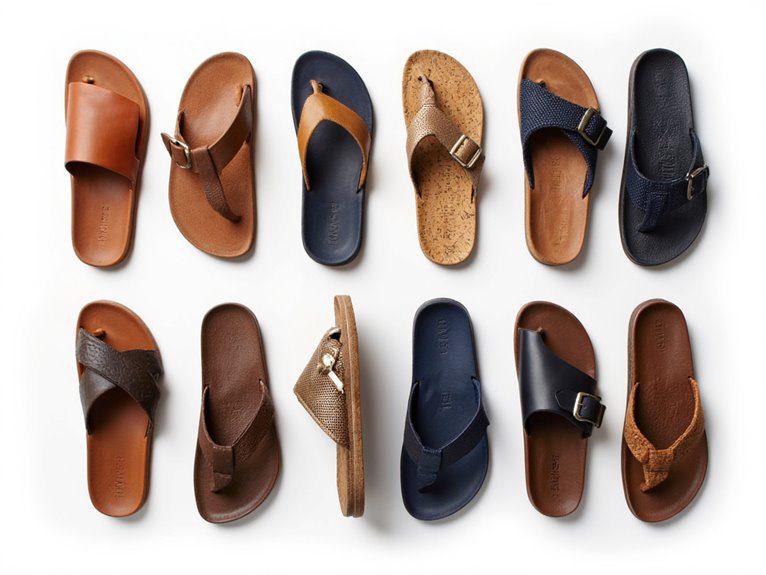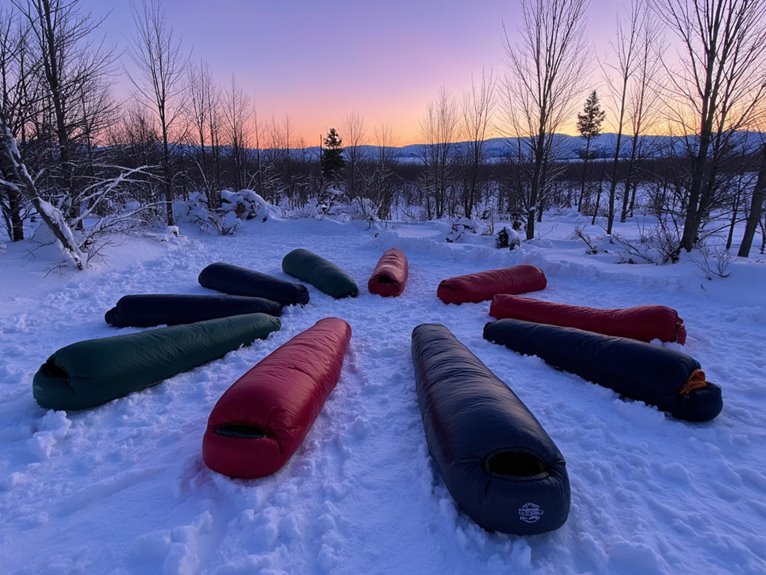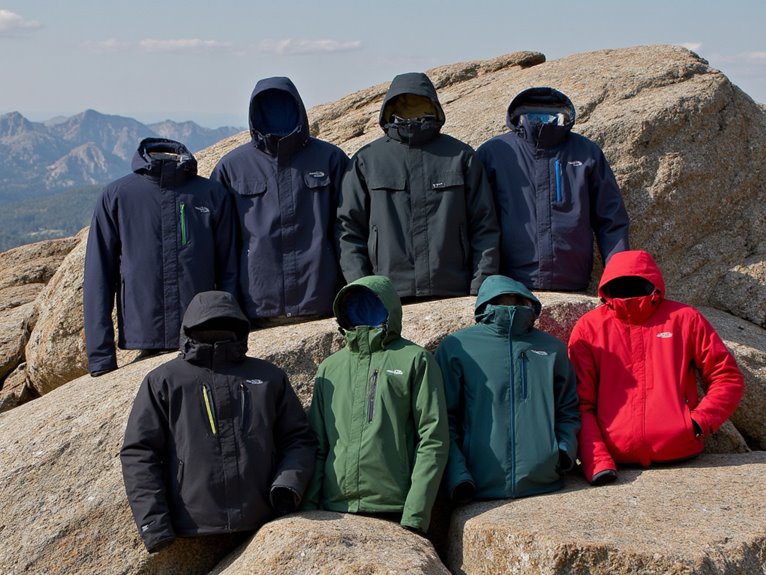Are Jeans Good for Kayaking?
Jeans are a poor choice for kayaking due to their high water absorption, which can make them heavy, cold, and restrictive. Cotton-heavy jeans absorb a lot of water, making them heavier and less buoyant, ultimately hindering performance and comfort on the water. Instead, opt for quick-drying, water-repellent fabrics like nylon or polyester that prioritize functionality over fashion. From understanding the importance of breathable fabrics to alternative pants that provide warmth and comfort, there's more to discover about dressing for a successful kayaking experience.
We are supported by our audience. When you purchase through links on our site, we may earn an affiliate commission, at no extra cost for you. Learn more. Last update on 8th January 2026 / Images from Amazon Product Advertising API.
Water Absorption and Buoyancy
When kayaking, the last thing you want is to be weighed down by waterlogged jeans, which is why understanding water absorption and buoyancy is essential for a comfortable and safe paddling experience.
Water absorption refers to how much water a fabric can hold, making it heavier and less buoyant.
Jeans, being cotton-heavy, absorb a lot of water, making them a poor choice for kayaking.
On the other hand, quick-drying, water-repellent fabrics like nylon or polyester are ideal as they minimize water absorption, allowing you to stay afloat and paddle efficiently.
Weight and Drag in Water
When kayaking, the weight and drag of your jeans can make a significant difference in your paddling experience.
Water absorption, density, and fabric choice all play a crucial role in determining how much energy you'll expend while navigating the water.
Water Absorption Matters
Most kayakers intuitively understand that the weight and drag of waterlogged jeans can hinder their paddling performance, but few realize the significant impact of water absorption on their overall kayaking experience.
Water absorption is a major concern when wearing jeans for kayaking.
- Slowed pace: Waterlogged jeans can add up to 5 pounds of extra weight, making every paddle stroke a struggle.
- Energy drain: The increased drag from wet jeans can leave you exhausted, even after a short paddle.
- Chilling effect: Water absorption can make you colder, faster, leaving you shivering and miserable.
Density Impacts Buoyancy
As kayakers, we've all experienced the frustration of being bogged down by waterlogged jeans, but few of us consider the critical role density plays in determining the buoyancy – and subsequent drag – of our pants in the water.
When submerged, denser materials like cotton jeans absorb more water, increasing their weight and causing them to sink. This added weight not only slows us down but also makes it more difficult to paddle and maneuver.
On the other hand, less dense fabrics, like nylon or polyester, will experience less drag and remain more buoyant.
Understanding the impact of density on buoyancy can help us make informed choices about our kayaking attire, ultimately enhancing our performance and overall experience on the water.
Fabric Choice Counts
In the quest for drag-free kayaking, the choice of fabric is vital, with a mere 100-gram difference in water-absorbed weight translating to a significant boost in paddling efficiency. When it comes to kayaking, every gram counts, and the wrong fabric can make all the difference.
- Water absorption: Heavy fabrics can absorb up to 50% of their weight in water, slowing you down.
- Drag coefficient: Smooth fabrics reduce drag, while rough ones increase it, making your paddle strokes more labored.
- Buoyancy: Lighter fabrics help you stay afloat, conserving energy for the fun stuff – like exploring hidden coves!
Breathability and Quick Drying
In the realm of kayaking, staying dry and comfortable is key.
That's why breathability and quick drying are essential features to look for in your kayaking jeans.
Moisture-Wicking Fabric Tech
Kayakers seeking comfort and performance on the water can benefit from jeans featuring moisture-wicking fabric technology, which allows for exceptional breathability and quick drying.
This innovative fabric technology draws sweat away from the skin, reducing clinginess and discomfort. As a result, kayakers can enjoy a more comfortable and focused paddling experience.
- Stay dry, stay happy: No more soggy, heavy jeans weighing you down.
- Freedom to paddle: Unrestricted movement and comfort mean you can focus on your stroke.
- Cool, calm, and collected: Moisture-wicking tech keeps you cool and composed, even on the most intense paddles.
Airy Weave Designs
By incorporating airy weave designs, kayakers can enjoy unparalleled breathability and quick drying, making it an essential feature for those who crave a comfortable and high-performance paddling experience.
Airy weave designs allow for increased airflow, reducing moisture buildup and promoting evaporation. This means you'll stay cooler and drier, even during intense paddling sessions.
Plus, quick drying fabrics reduce the risk of chafing and discomfort, ensuring you can focus on the thrill of kayaking.
Comfort and Mobility Issues
Maneuvering tight spaces and making quick turns on the water demands a full range of motion, which is precisely where traditional denim jeans can fall short. Rigid denim can restrict your movement, making it difficult to paddle efficiently or respond quickly to changing water conditions. This can lead to frustration, fatigue, and even safety issues.
Restricted leg movement is a common issue with traditional jeans for kayaking. Stiff denim can limit your ability to move your legs freely, making it harder to paddle or adjust your position in the kayak.
Constricted hip movement is another issue. Tight jeans can restrict your hip movement, making it difficult to rotate your torso or adjust your paddle stroke.
Discomfort in the seat is also a problem. Thick denim can cause discomfort or even pressure points on your seat, making long kayaking sessions unbearable.
Insulation and Cold Water
Cold water immersion is a real concern for kayakers, and traditional denim jeans offer little to no thermal protection, leaving you vulnerable to the elements.
If you plan to kayak in chilly waters, jeans are not your friends. In fact, they can become a liability, making you colder and heavier in the water.
This is because denim is a poor insulator and absorbs water like a sponge, making it difficult to stay warm and buoyant.
In the realm of cold water kayaking, it's essential to prioritize warmth and safety over style. Jeans simply don't cut it in this department, so it's time to explore alternative options that can keep you warm, dry, and comfortable on the water.
Look for gear that can provide the necessary protection and comfort for a safe and enjoyable kayaking experience.
Alternative Pants for Kayaking
In the pursuit of warmth, comfort, and safety on the water, kayakers can opt for specially designed pants that prioritize functionality over fashion, offering a range of benefits that traditional jeans simply can't match. These alternative pants are designed to keep you dry, warm, and comfortable, allowing you to focus on your kayaking experience.
- Quick-drying fabric to reduce chafing and discomfort
- Built-in UPF protection to shield your skin from the sun
- Water-repellent coatings to keep you dry in wet conditions



